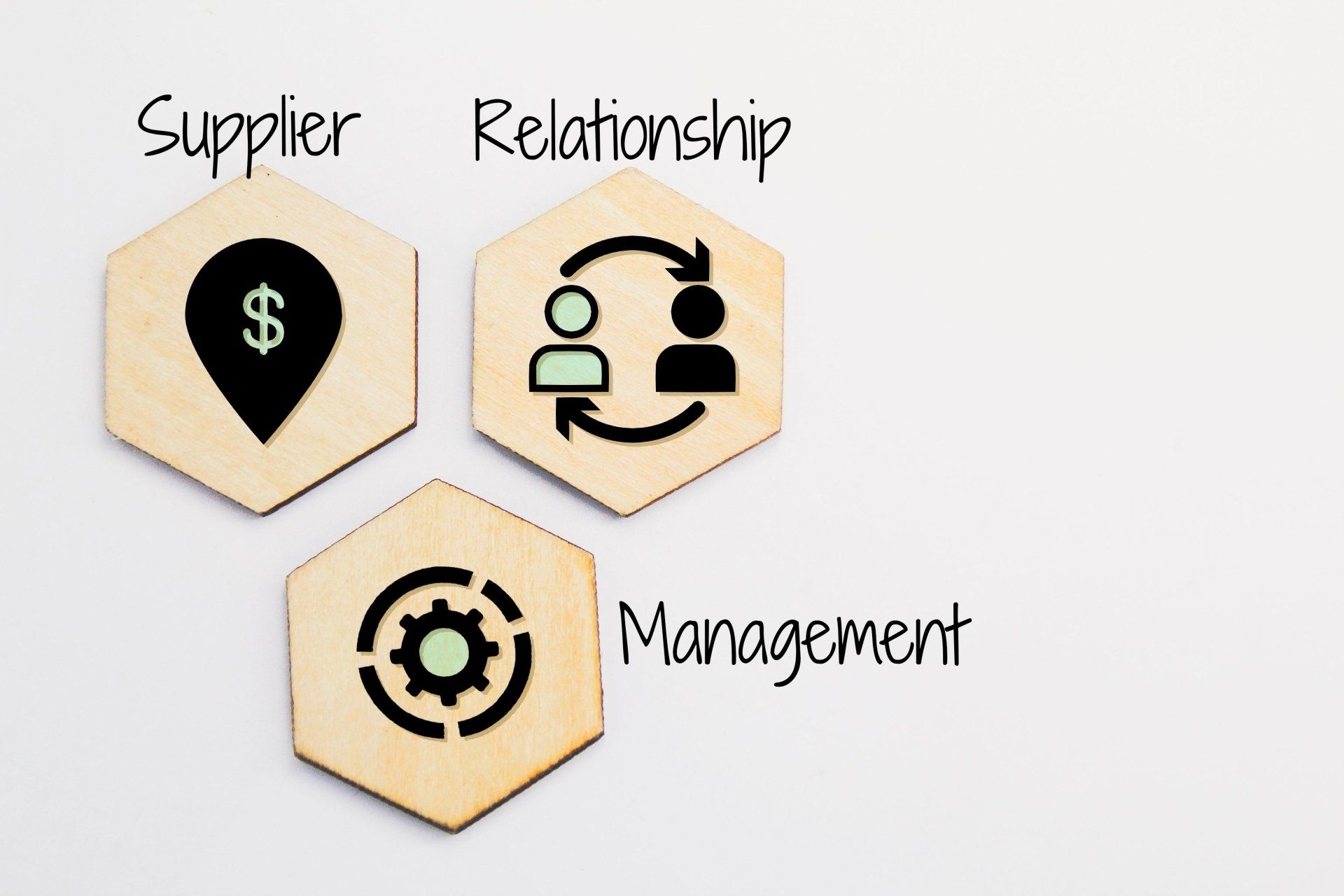Procurement Consulting Services
WE ARE HERE TO HELP YOU
Our Consulting Approach
Procurement actively contributes to the development of business. Aligning the Procurement strategy with the company's goals, mission and vision is a necessary condition for creating a sustainable competitive advantage. We are here to contribute to its achievement, through our consulting services.
- Procurement Policy
- Spend Analysis
- Supplier Relationship Management
- Category Management
- ESG Strategy - Sustainable Procurement
Creation of Procurement Policy
Procurement Policy
Procurement Policy defines the different procurement categories, processes and procedures that the company uses to purchase services and materials. It sets a proper framework that aligns procurement executives decisions and actions to the company's goals.
How it will benefit you
- Standardizes & speeds up processes
- Improves procurement performance
- Minimizes conflict
- Defines executives roles and responsibilities
- Reduces ad hoc purchases
- Improves suppliers relationships
- Reduces procurement risk ans cost
Internal Survey
Through a series of surveys and interviews our company maps all procurement processes and the parties involved in them (Internal Customers, Management, Legal).
Process Evaluation
Our company evaluates processes in relation to their performance and effectiveness, according to the objectives of the Procurement department. Through the evaluation process we identify potential problems and areas for improvement.
Process Optimization
Our specialized consultants carry out an evaluation of the weak points and propose solutions for the improvement and restructuring of the processes. They record the workflow of the procedures and draw up the Procurement Policy.
Implementation of Procurement Policy
Finally, the consultants of our company make a presentation of the policy, to all the parties involved, and evaluate possible areas for improvement. They determine the necessary steps to implement the Policy as well as the period of re-evaluation of its results, through benchmarking.
Spend Analysis
Spend Analysis
Spend analysis studies and reviews costs related to supplies with the aim of reducing them or increasing their efficiency.
Spend analysis is the key tool for identifying cost-reduction opportunities, improving buyers negotiating position, and increasing contractual compliance.
The data produced by spend analysis, guide senior management in formulating supply categories and devising supply strategies that add value to the firm's capital.
How it will benefit you
The data from the multiparametric analysis of costs provides valuable information for:
- future supply planning
- the degree of compliance of business units with the central supply policy
- problems arising in the supply flow.
In addition, cost cubes can be used to measure the performance of both suppliers and procurement officers.
By conducting a Spend Analysis, our company will help you achieve:
- Complete transparency and clarity in spending
- Better planning and process improvement
- Reduction of non-contractual procurement (Maverick Spending)
- Cost reduction opportunities identification
- Improved relationships with suppliers
- Reduced supply dependence on the IT department
Required Information
The first and perhaps most important decision in conducting a cost analysis concerns the type of information required.
Depending on the needs of the analysis, our company determines the necessary information as well as the appropriate way of collecting the data to draw conclusions.
Modeling of Information
After identifying and extracting the necessary information, a model based on OLAP (On-line Analytical Processing) technology is created through which the information can be categorized and restructured in many ways. This model is a multi-dimensional representation of information consisting of 'dimensions' and 'measurements'.
The dimensions are Suppliers (Who you buy from), Cost Centers (Who you buy it for) and Items or Item Categories (What you buy).
The cost cube is usually the end result of the cost analysis process.
KPI's
Depending on the level of analysis, key performance indicators are produced that are created by slicing and dicing or rolling up the data. These indicators are used by supply managers in order to come up with improvement proposals.
Our company, after a comprehensive analysis and evaluation, will help you determine the necessary indicators for optimal monitoring and valid conclusions
Supplier Relationship Management
Supplier Relationship Management
Supplier Relationship Management aims to match the potential value of the supplier and its degree of risk (supplier risk) with the level of effort we must put in to get the greatest possible benefit from our collaboration with him. It requires designing an appropriate Supplier Portfolio.
How it will benefit you
- Reduction of Procurement risk
- Improved Supplier performance
- Identification of potential opportunities (commercial activities, identifying market needs, joint promotion)
- Reduction of Procurement costs
- Improved negotiation strategy
- Increased Supplier Enabled Innovation
- Better access to information
- Improved demand forecasting accuracy
- Reduction of Procurement risk
Supplier Categories & Subcategories
Suppliers are categorized into 4 levels (Strategic Suppliers, Managed Suppliers, Preferred Suppliers, Tactical Suppliers) and into corresponding sub-categories.
Depending on your strategy and goals, our company will help you develop the appropriate method of managing relationships with each supplier sub-category, so that you reap the maximum benefits.
Redefining Relationships
Our company evaluates existing relationships with suppliers and redefines them based on the added value and potential risks that may arise from your company's transactions with them.
Category Management | Creation & Optimization of Strategic Procurement Planning
Category Management
Category Management is a structured process for the procurement of goods and services.
It applies the appropriate tools & techniques to develop and execute a comprehensive strategy for each category that is aligned with the requirements of each business
It implements a structured and reliable strategic Sourcing process for the procurement of all required services and materials
How it will benefit you
- Achieves savings typically 10% - 30%
- Improves the efficiency of the use of internal resources
- Improves service level
- Elevates the role of Supply Management within the business
- Identifies and mitigates Supply Chain risks
Grouping of Goods & Services
By identifying categories we refer to the grouping of items & services available from the same or similar supplier base. Our company can help you separate your supplies into effective categories to achieve the expected benefits.
Class Plan
The Category Plan is a one-page, one-category presentation of your business. The program contains key indicators and information in a concise form and can be used for cooperation with internal customers. Through this plan, a category's strategies can be decided based on data rather than instincts.
Category Strategies
Supply chain and internal customers define the approach to take in each category. This approach does not only include ways of selecting suppliers, but innovative decisions can also arise, such as make or buy decisions, developing corporate partnerships or redesigning products.
Category Management
According to the choice of strategy, the appropriate supply model is chosen, which determines the type of negotiations, the type of contracts, the management of Supplier relations, the appropriate performance indicators and the plan for continuous improvement.
ESG Strategy - Sustainable Procurement
Environmental, Social and Corporate Governance
ESG (Environmental, Social and Corporate Governance) is a framework that aims to create value for businesses by reframing corporate objectives to include the identification, assessment and management of risks and opportunities related to sustainability in relationship with all stakeholders (including, but not limited to, customers, suppliers and employees) and the environment.
With the term Sustainable Procurement we refer to the integration of key ESG principles into Procurement processes, procedures and policy, ensuring that cooperation with suppliers is in line with the company's social and political responsibility strategy.
How it will benefit you
In many countries, companies are already required to take into account environmental and social standards and monitor their compliance with them along the supply chain. The European Union is planning to enforce a regulation on ESG enforcement in the supply sector (Supply Chain Act).
Procurement plays a key role in achieving the company's sustainability goals and reducing its carbon footprint. Focusing on sustainability enhances organizational performance and improves product quality, enhances innovation and reduces supply chain risk.
Raising awareness of executives & highlighting the value of ESG
- Raising awareness among executives about the trend that is developing towards sustainable development (sustainability) and the transformation due to climate change (climate change transformation), resulting in the preparation by all large companies (Banks, Industries, etc.) of a new sustainable strategy
- Highlighting the value created by sustainable supply practices in terms of risk mitigation, the reduction of supply chain costs, and the improvement of the brand value of companies that adopt such practices.
Redefining procurement policy & adoption of sustainable practices
- Enrichment of existing procurement policies with green procurement procedures
- Adoption of ESG rating system for suppliers as part of the suppliers evaluation process
- Key steps for the preparation of the "sustainable procurement" business case and the creation of ESG KPIs








